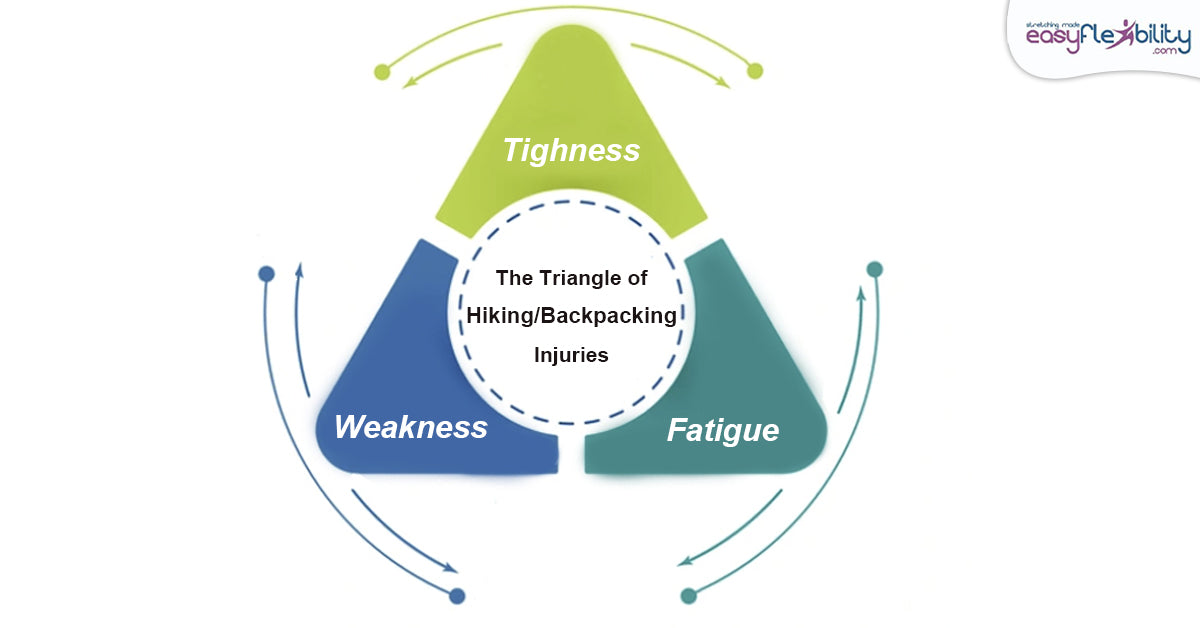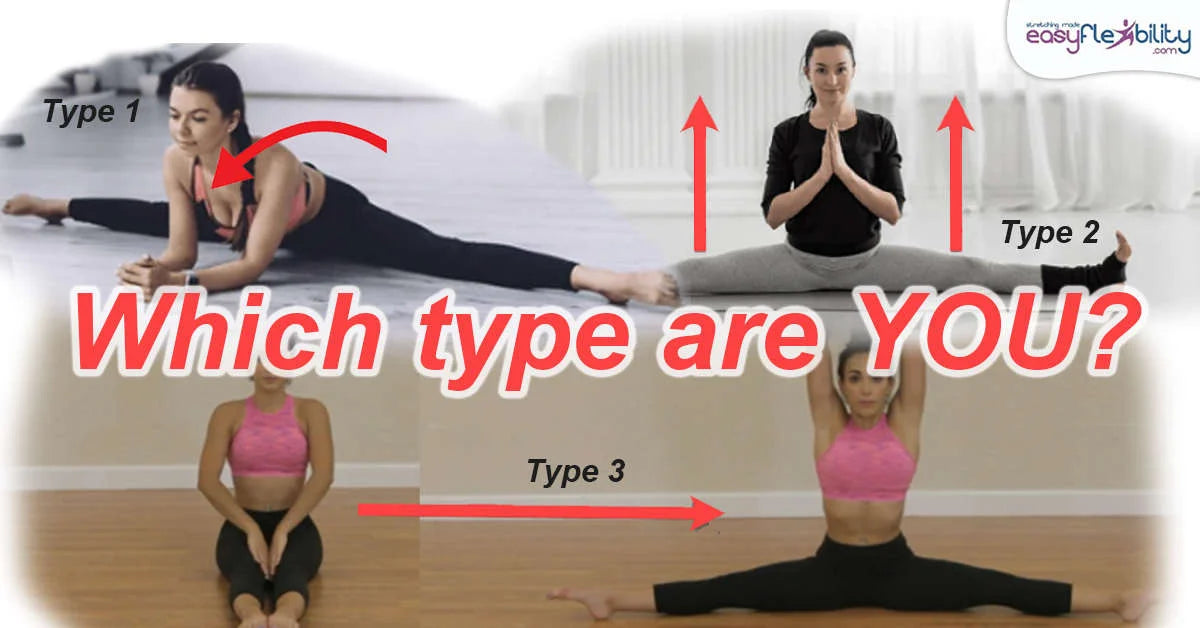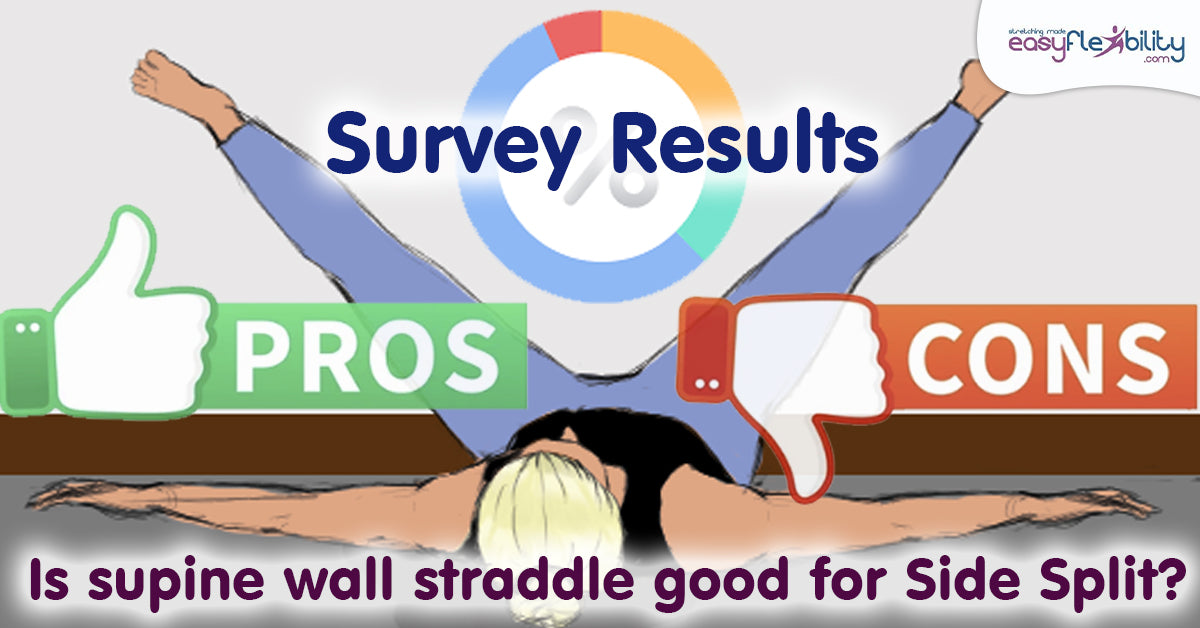Is Front Split Always Hamstrings Dominant?
Posted by Paul Zaichik on

Is Front Split always Hamstring dominant? The short answer is yes. It is very difficult to find someone who has a completely balanced True Front Split with a 50% flexibility coming from the front leg and 50% flexibility coming from the back leg.
We frequently get questions about this because we have made several videos and posted several articles talking about the True Front Split . The functional and structural true front split. And the mistakes that people make in a True Front Split, both in training, performance, and using the split for various skills.
We frequently get questions about this because we have made several videos and posted several articles talking about the True Front Split . The functional and structural true front split. And the mistakes that people make in a True Front Split, both in training, performance, and using the split for various skills.
Want to know if your True Front Split is hamstrings dominant? Take this test!
Before we dive deeper, most likely you want to know if your True Front Split, providing that you can do a full true front split, is hamstring dominant or is it front leg dominant? If you cannot yet do a full front split, don't worry, we have programs that can help you get your True Front Split fast and easy.
There's several ways to check if your True Front Split is hamstrings dominant or front leg dominant. One simple way is to do a general hip flexors check. In the EasyFlexibility system we can use Zaichik Stretching Techniques to check each muscle one by one, but here you would do a general hip flexors test.
True Front Split Strength & Flexibility Training at Home
COMPLETE COMBO - ALL 3 LEVELS - BEGINNER, INTERMEDIATE, ADVANCED
It's easy to get started!
If you are ready to do effortless Splits ANYTIME that you wish with a training method that is Easy, Pain Free and Fast, that is designed to work naturally with your body and keep your flexibility for years to come, then join thousands of satisfied EasyFlexibility practitioners and START YOUR TRAINING TODAY!
This Course includes the following step by step instructions for:
This Course includes the following step by step instructions for:
- Beginner Split
- Intermediate Split
- Advanced Split (Beyond 180 degrees)
Here is a simple test you can do right now to test your True Front Split
- Keep your back neutral, keep it from hyperextending.
- Now do a lunge with your back knee on the floor.
If you're not extending your hip to 90 degrees, and yet you can do a true front split, that means that the front leg is doing more than 50% of the work. You're getting more than 90 degree flexibility from the front leg when doing the front split. Because, if you're not getting 90 degrees from the back leg to get a total of 180 degrees, you have to get that flexibility from somewhere, and it's coming from your front leg. Your front hamstrings and the other extensions of the hip on the front leg.
On a side note, if you were to check your hamstrings flexibility and lie down on your back and simply keep your back neutral and lift your leg up. If your back leg is not getting 90% and your front leg is not getting enough degrees to compensate (meaning that your leg would be over your body). Then you are not doing a proper true front split. You might be able to still do it, but you probably are using all kinds of compensations to get down.
Another test you can do is do a true front split.
- • Do a True Front Split
- Be sure to do it properly with hips squared back knee pointing at the floor.
- There is a line between front and back leg.
- Front leg is not turned out and so on.
And if you can get all the way down. Check yourself. Are you dropping forward toward your front leg? If you are, then you're getting more flexibility from your front leg because you're trying to keep your back hip from being hyperextended by dropping forward.
Important point here is that if you have a very flexible lower back, you might still get a lot of flexibility from your front leg and then hyperextend your back so that you are vertical. So, it looks like you're doing a true front split, but one leg is doing more than the other. And this is a functional versus structural true front split. And you could see articles about that here, explaining this further.
True Front Split Strength & Flexibility Training at Home
COMPLETE COMBO - ALL 3 LEVELS - BEGINNER, INTERMEDIATE, ADVANCED
It's easy to get started!
If you are ready to do effortless Splits ANYTIME that you wish with a training method that is Easy, Pain Free and Fast, that is designed to work naturally with your body and keep your flexibility for years to come, then join thousands of satisfied EasyFlexibility practitioners and START YOUR TRAINING TODAY!
This Course includes the following step by step instructions for:
This Course includes the following step by step instructions for:
- Beginner Split
- Intermediate Split
- Advanced Split (Beyond 180 degrees)
In some cases, you may need to work on you hip flexors flexibility
In some cases, if you're able to do a proper true front split and yet it's front leg dominant. Where your low back strength and flexibility allows you to keep your torso up. And you want to develop more flexibility. It makes sense, depending on what you are going to use the True Front Split for, to actually work on your hip flexor flexibility.
Having great hip flexors flexibility will make your split more even and will help get that back leg more engaged. If your split is very uneven you can do a beginners hip flexors program or advanced program, depending on how much range of motion you have in your leg, when you do the split. And how much you are overcompensating with the front leg.
More often than not, if you can do a true front split flat, but you are overcompensating with your front leg, unless your body is completely down and over your front leg, you probably have some flexibility in your rear leg. Which means you’ve done some kind of training for your rear leg, hip flexors and for your adductors, agonist and antagonist strengths. So, in this case, it usually makes sense to go to the advanced hip flexors program.
Hip Flexors Flexibility & Strength Basic Level Program
This program focuses on general anatomic hip extension flexibility. This means the movement of the hip in purely sagital plane. No actions in coronal or transverse plane take place. Each of the hip flexors is adressed separately together with other muscle groups, which can restrict hip extension.
Hip Flexors Advanced Level Program
This hip flexors program is truly unique. It builds up on the previous one. (Thousands of people have extreme flexibility in their hip flexors from using our regular hip flexors program). This program takes an already very fast and effective Zaichik Stretching Techniques and enhances them with "modalities" for even faster results.
Are you doing a True Front Split or do you just have deep hamstrings flexibility?
There are people who are not doing a true front split at all. They simply have very deep hamstring flexibility, and they rely on that 90% to do the split. Just recently, someone reached out to us for assistance. She sent us her daughter's flexibility pictures.
Her daughter, Lilly, was able to bend forward completely with both of her legs straight. Showing excellent hamstring flexibility and also was able to do a cobra with her chest pointing up to the ceiling, showing excellent back bending flexibility. And yet, the hip flexor flexibility was average at most. And that was the point for her to work on. We recommended that she start with a beginner's hip flexors program. And then eventually move on to the Advanced Hip Flexors program.
Final note
Bottom line, it is important to remember that just because the legs are a 180 degree apart doesn't mean that it's a perfect split. And there is usually, for most people, more room to work on to improve the split. Making it look better. Making it safer to do. Making it more productive, especially if is going to be used in a skill, for example, in a jump, or in a kick, or in a tumbling skill, etc.
If you aren’t sure if you’re doing a proper True Front Split, or need help in selecting the right program for you, feel free to reach out to us by sending an email to info@easyflexibility.com
True Front Split Strength & Flexibility Training at Home
COMPLETE COMBO - ALL 3 LEVELS - BEGINNER, INTERMEDIATE, ADVANCED
It's easy to get started!
If you are ready to do effortless Splits ANYTIME that you wish with a training method that is Easy, Pain Free and Fast, that is designed to work naturally with your body and keep your flexibility for years to come, then join thousands of satisfied EasyFlexibility practitioners and START YOUR TRAINING TODAY!
This Course includes the following step by step instructions for:
This Course includes the following step by step instructions for:
- Beginner Split
- Intermediate Split
- Advanced Split (Beyond 180 degrees)

About the Author:
Paul Zaichik is an Exercise Science Expert, author of multitude of books, and the creator of Zaichik Stretching Technique (formely known as Kinesiological Stretching Technique). His speciality is flexibility training as well as body weight conditioning. His innovative method is designed to have maximum carry over into specific athletic techniques. Paul is the author of books and DVD’s on the topic of flexibility, martial arts and bodyweight training. Over the years, Paul Zaichik has worked with a variety of individuals including athletes, entertainers, and military personnel. His ElasticSteel Method of Athletic Conditioning programs, EasyFlexibility Programs and Zaichik Stretching Techniques are used world wide by both professional and amateurs with great success.
© ElasticSteel Corp., EasyFlexibility, Paul Zaichik, et. El., 2022. No part of the materials available through ElasticSteel.com, EasyFlexiiblity.com, site may be copied, photocopied, reproduced, translated or reduced to any electronic medium or machine-readable form, in whole or in part, without prior written consent of Paul Zaichik EasyFlexibility.com, Elasticsteel.com.. Any other reproduction in any form without the permission of Paul Zaichik EasyFlexibility.com, Elasticsteel.com is prohibited. All materials contained on this site are protected by United States copyright law and may not be reproduced, distributed, transmitted, displayed, published or broadcast without the prior written permission of Paul Zaichik, EasyFlexibility.com, Elasticsteel.com.
Share this post
- 0 comment
- Tags: can anyone do the splits, doing the splits stretches, easyflexibility, flexibility, front splits, full split, hip flexors, how to get flexible fast, how to get your splits, learn how to do a split, Training Flexibility, true front split
0 comment












